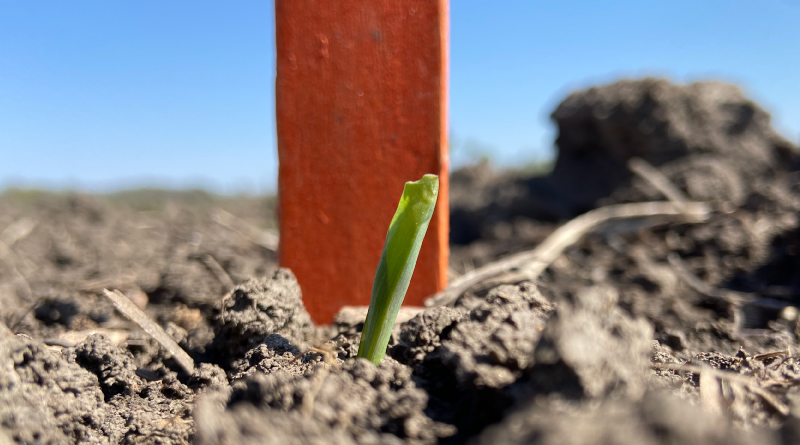Calculating GDDs for Corn Emergence
After planting, growers wait for signs of emergence and the ability to evaluate their stand. Predicting time of emergence can be done through calculating growing degree days (GDDs). There are a set number of GDDs needed for a crop to emerge. For corn, 120-130 GDDs are needed for emergence and soybeans require approximately 90. While there is not an exact science to perfectly determine GDDs, their use is more accurate than calendar days. Calculating GDDs can be difficult, however there are online resources to do the math for you.
The Midwest Regional Climate Center website features a GDD calculator. On their website, select your county and planting date to see the current GDDs as well as predicted dates of frost, silking and black layer. The first step is to determine there have been enough GDD’s for emergence. Next, take stand counts and/or dig up seed to determine stand quality and potential.
Stand Counts Following Emergence
After emergence, schedule an appointment with your Burrus Account Manager to conduct a Net Effective Stand (NES) count. We recommend NES evaluations in the V3 stage. At 3-leaf corn you can tell with a high degree of accuracy the net effective stand and yield potential.
Stand reviews with your Burrus Representative can help answer important crop questions, including:
- Given the hybrid planted, what are the potential impacts on yield?
- With a high stand are additional nutrients needed?
- How much will the hybrid compensate for a low stand?
- Will seedling development be optimum, will root development be normal?
Our team is equipped with NES evaluation cards to record and track field progress through the early growing season. Following the growth stages closely helps better prepare for the final yield potential and take the steps necessary to protect it.






